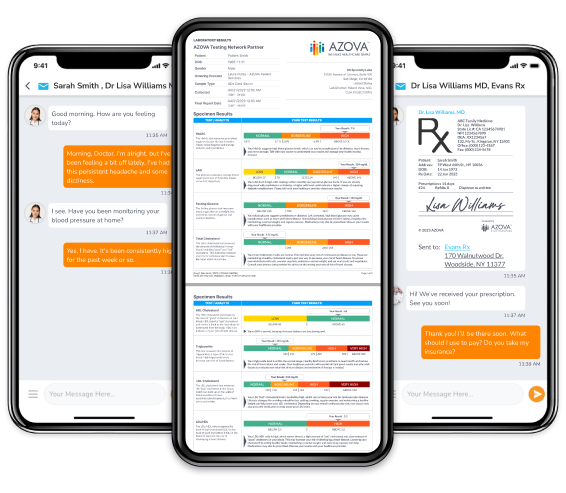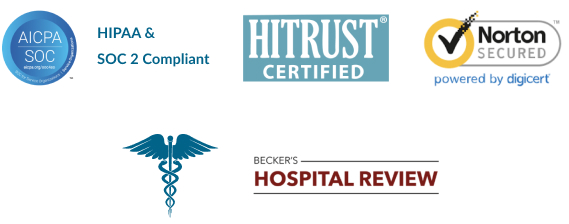Reliable yeast infection treatment, just a click away.
Connect with a board-certified healthcare provider for yeast infection relief via a quick, secured video visit or messaging. Receive a diagnosis and treatment plan, all without leaving home.
Available in all 50 states.

Understanding yeast infections1
A vaginal yeast infection, or vaginal candidiasis, is a fungal infection that can cause quite a bit of discomfort. It leads to irritation, discharge, and that all-too-familiar intense itchiness in both the vagina and the vulva (the outer part of the vaginal area).
Up to 75% of women will face this issue at some point, and many deal with it more than once. Although it’s not classified as a sexually transmitted infection, it’s worth noting that the risk can increase during the initial stages of regular sexual activity.
Yeast infection symptoms2
Vaginal yeast infections, also known as candidiasis, are common fungal infections that can cause discomfort and irritation. Understanding the symptoms of a yeast infection can help you identify and address the issue promptly.
- Discharge: Yeast infections often produce a thick, white discharge similar to cottage cheese.
- Other symptoms: Itching, burning, pain, soreness, vaginal burning, watery discharge, and a rash may also occur.
- Severe symptoms: Four or more infections within a year are considered recurrent vulvovaginal candidiasis (RVVC). Recurrent infections may lead to severe redness, swelling, itching, fissures, and sores.
Yeast infection causes3
Vaginal yeast infections are typically caused by Candida albicans, a yeast that normally resides in small amounts in the mucous membranes of the genitals without causing issues. Here are some other causes:
- Disruption factors: Disruption in the balance of microorganisms can occur due to factors like pregnancy or medication.
- Pregnancy: High estrogen levels during pregnancy can alter this balance, increasing the risk of yeast infections.
- Contraceptive pill: The contraceptive pill also affects hormone levels similarly to pregnancy, making women who take it more susceptible to yeast infections.
- Illnesses: Certain illnesses, such as diabetes and conditions that weaken the immune system, elevate the risk.
- Medications: Medications like antibiotics, steroids, hormone therapy, radiotherapy, and chemotherapy can increase susceptibility.
- Transmission: Yeast infections can sometimes be contracted through sexual contact if a partner has a yeast infection.
- Other risk factors: Stress, washing the genitals with soap, wearing synthetic and tight clothing, sweating, and using non-breathable panty liners or sanitary pads can also lead to infections.
Yeast infection treatments3
When managing vaginal infections, there are several treatment options available, each with its own set of benefits and considerations.
- Topical treatments: Suppositories or creams can be inserted into the vagina using an applicator. The duration of treatment varies depending on the product used, but it typically takes 1 to 6 days. While effective, these topical treatments may cause burning or itching as a side effect.
- Oral medications: Oral antifungal medication in the form of a single tablet is another option. However, it can interact with other medications and may lead to side effects such as nausea, diarrhea, or headaches. Additionally, oral antifungal medication is not suitable for pregnant women.
- More intensive treatment: For severe cases or individuals with an increased risk of complications (e.g., due to a weakened immune system), a more intensive treatment may be necessary. This often involves taking antifungal tablets for several months.
AZOVA’s Virtual Care services provide confidential and reliable yeast infection treatment from the comfort of your home. Secure video consultations with our expert providers ensure personalized, effective care, making your treatment both discreet and convenient.
Don’t suffer through discomfort. Get treatment for yeast infections today.
References
¹Mayo Clinic. (n.d.). Yeast infection: Symptoms and causes. Mayo Clinic. Retrieved from https://www.mayoclinic.org/diseases-conditions/yeast-infection/symptoms-causes/syc-20378999
²Stöppler, M. C. (2020, November 6). Yeast infection: Symptoms, causes, and treatment. Medical News Today. Retrieved from https://www.medicalnewstoday.com/articles/151172#symptoms
³Liu, J., & Zhao, Y. (2020). Fungal infections: Diagnosis and management. In J. F. Stevens (Ed.), Fungal infections (pp. 55-72). National Center for Biotechnology Information. Retrieved from https://www.ncbi.nlm.nih.gov/books/NBK543220/
Need help or have questions?
Contact our AZOVA Customer Support team below
Live 24/7 chat
(quickest response)
You can chat with AZOVA’s Customer Support team for comprehensive support, including help with your account, testing, shipping, and results.
We typically respond within 5 minutes. Click the messaging icon on the lower right corner of the page to get started.



